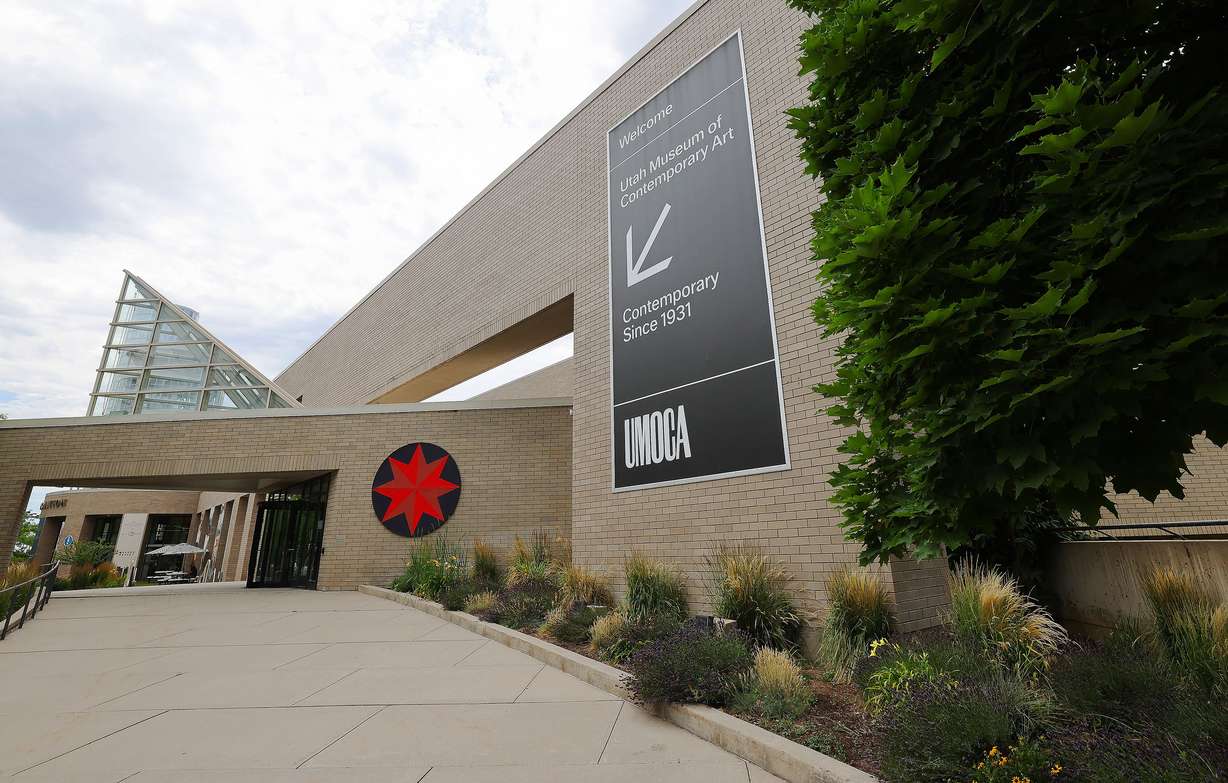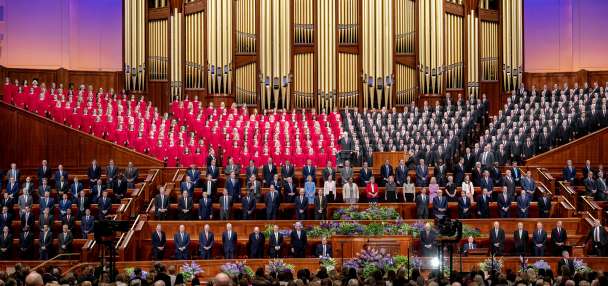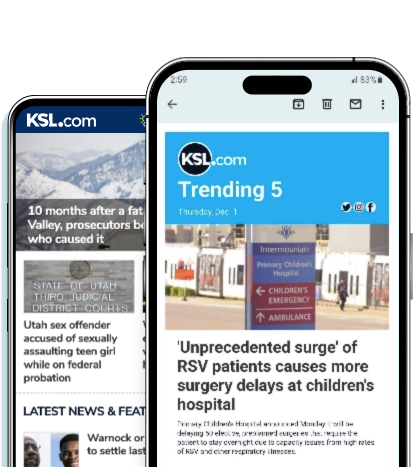Estimated read time: 5-6 minutes
SALT LAKE CITY — It appears that Smith Entertainment Group and local governments are leaning toward demolishing and rebuilding an arts museum as a part of sweeping changes proposed for downtown Salt Lake City, but those who oversee the museum say it may not be a bad thing.
Both the Utah Museum of Contemporary Art, commonly referred to as UMOCA, and Abravanel Hall, which were built next to each other in the 1970s, are included in the second phase of the latest Smith Entertainment Group design for a "sports, entertainment, culture and convention district" surrounding the Delta Center.
That portion has not yet been revealed publicly, as the company's latest design — unveiled on June 11 — only covers the Delta Center block and the block east of it. But Laura Allred Hurtado, the museum's executive director, said Wednesday that current plans include a "likelihood" that the museum will be torn down and rebuilt within its existing block.
That's based on ongoing Salt Lake County discussions, but she clarified to KSL that exact details are subject to change. Its rebuild would also be contingent on the project being approved and funded.
"There's lots of moving parts, so there's been various versions of what that looks like," she said during an online open house about the building's future. "We're learning — as other people learn — about what that space could look like."
While efforts have been made to preserve Abravanel Hall, Utah Museum of Contemporary Art leaders explained Wednesday that they've warmed up to the idea of a new building as long as it's on the same block. Hurtado and others in UMOCA's leadership say they support a new building and a potential 0.5% sales tax increase tied to the project, which the Salt Lake City Council will vote on this summer.
"It can feel scary and a little tenuous, but we're also quite cautiously optimistic that this could be a really meaningful change for our organization," she said.
Looking for a new home
The Utah Museum of Contemporary Art predates its current home. The organization was formed in 1931 as the Art Barn, which operated out of a property near 800 East and South Temple. It went through multiple name changes and venues, but it has been a key promoter of local, national and international art over the years.
What it is now UMOCA moved into its current location in 1979, the same time that Abravanel Hall opened. Both buildings were part of a "Bicentennial Arts Complex Project" near the corner of West Temple and South Temple.
However, the organization's leaders said Wednesday they've thought about a new home for some time because of growing challenges with the building that they rent from the county.
It began in 2020 as the organization began crafting a new strategic plan. After interviewing over 100 people, leaders found "a significant amount of concerns" with the building, Hurtado said. People said it was difficult to find, difficult to navigate and "an invisibility of our mission."

Jared Steffensen, UMOCA's curator of exhibitions, added that the building's offices jumbled up the building's "flow," adding to all the visitor confusion. All of this sparked new ways to market itself, but also a new master plan for the building.
That's what spurred the master plan, but seismic stability and heating, ventilation and air conditioning concerns are the biggest issues with the building outlined in the plan. Lighting, acoustics and accessibility issues are also outlined in it.
Meanwhile, the organization also noted strengths it found in its location. Despite the building's challenges, the museum generated "crossover" traffic from people visiting Salt Lake City for a convention at the Salt Palace Convention Center or who were just visiting the area.
"We believed that we belonged downtown and felt like our location was strong, but the building itself was kind of working against us," Hurtado said.
Fitting into a bigger plan
These conversations were playing out when the Utah Legislature approved a bill in March that created a revitalization district surrounding the Delta Center, aiming to better position Utah for a National Hockey League team. Then in April, Smith Entertainment Group acquired the Arizona Coyotes in a deal that relocated the team to Utah.
The next thing UMOCA leaders knew, the museum — owned by Salt Lake County — was included in Smith's proposed changes for a "sports, entertainment, culture and convention" district. Hurtado said it was a perfect opportunity for what both sides were looking for, offering a possible new home for arts in downtown Salt Lake City.

It's unclear when any changes will take place, as the plan is in Salt Lake County's hands. Smith Entertainment Group executives said last month they'd respect the county's decision on both UMOCA and Abravanel Hall. Steffensen points out that UMOCA's fate will be determined "separately" from Abravanel Hall.
The Salt Lake City Council is expected to vote as early as next week on a potential partnership through a process outlined in the bill. The City Council also has until Sept. 1 to approve the associated tax increase. Plans for all the buildings will likely become clearer as that process shakes out.
If an agreement is reached, UMOCA officials say there could be some "additional" funding requests for the project made during the 2025 legislative session. Money is ultimately the "hangup and maybe the stopper," Hurtado said.
"It does require a lot of buy-in and a lot of resources," she told KSL.
Other logistics would have to be hammered out if the building is torn down, such as identifying a temporary home for the Utah Museum of Contemporary Art or what a new museum would look like. These are expected to be sorted out as it moves forward if the building is indeed torn down.
But Steffensen, like Hurtado, remains at least "cautiously optimistic" that everything will be figured out and play out in the museum's favor. Ultimately he believes a rebuild would allow UMOCA an opportunity to grow in a way currently hampered by its current building.
"I don't think tearing down the building is tearing down UMOCA as an institution," he said. "What I do see is an opportunity to expand on programming and opportunities we have for local artists."









